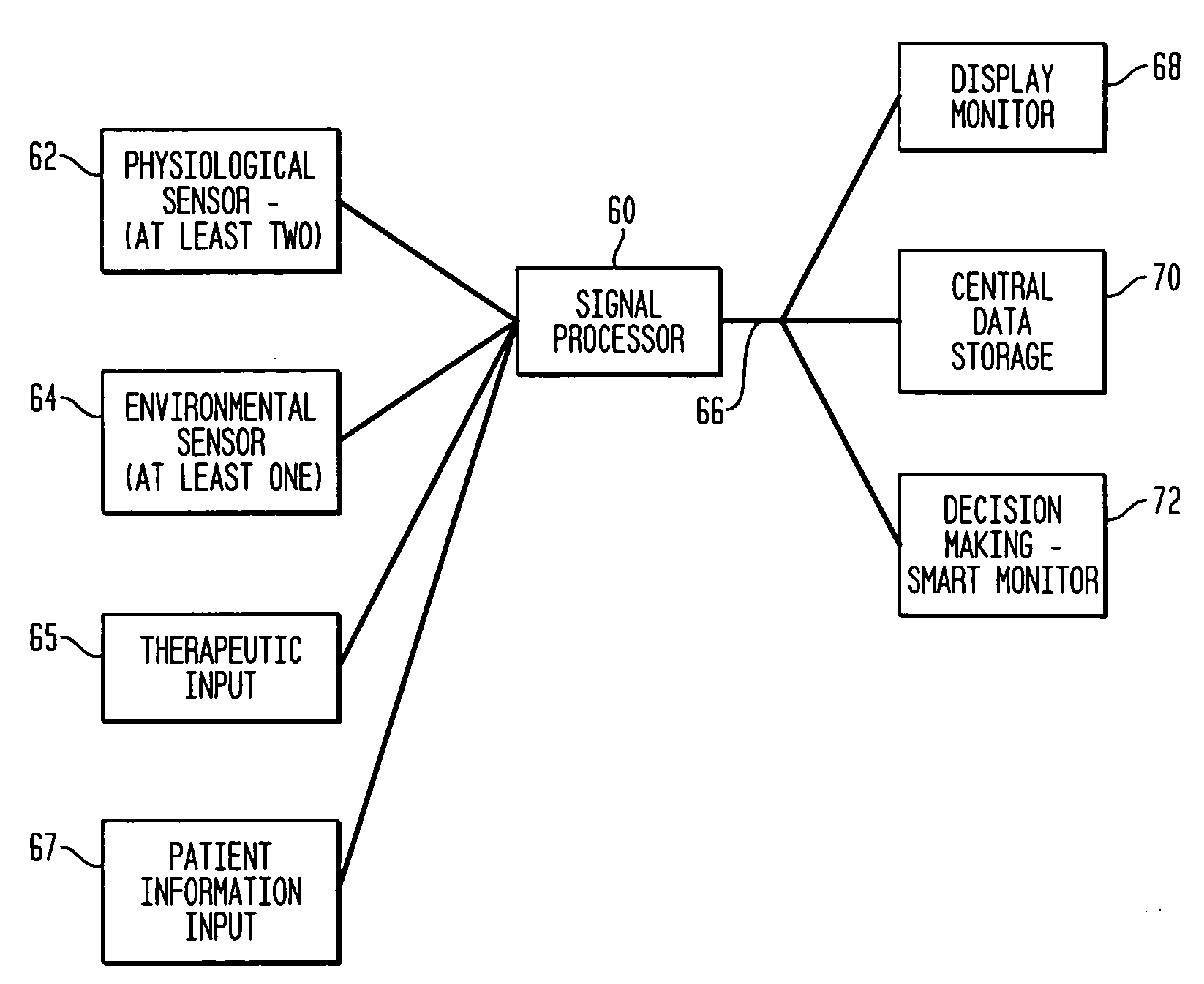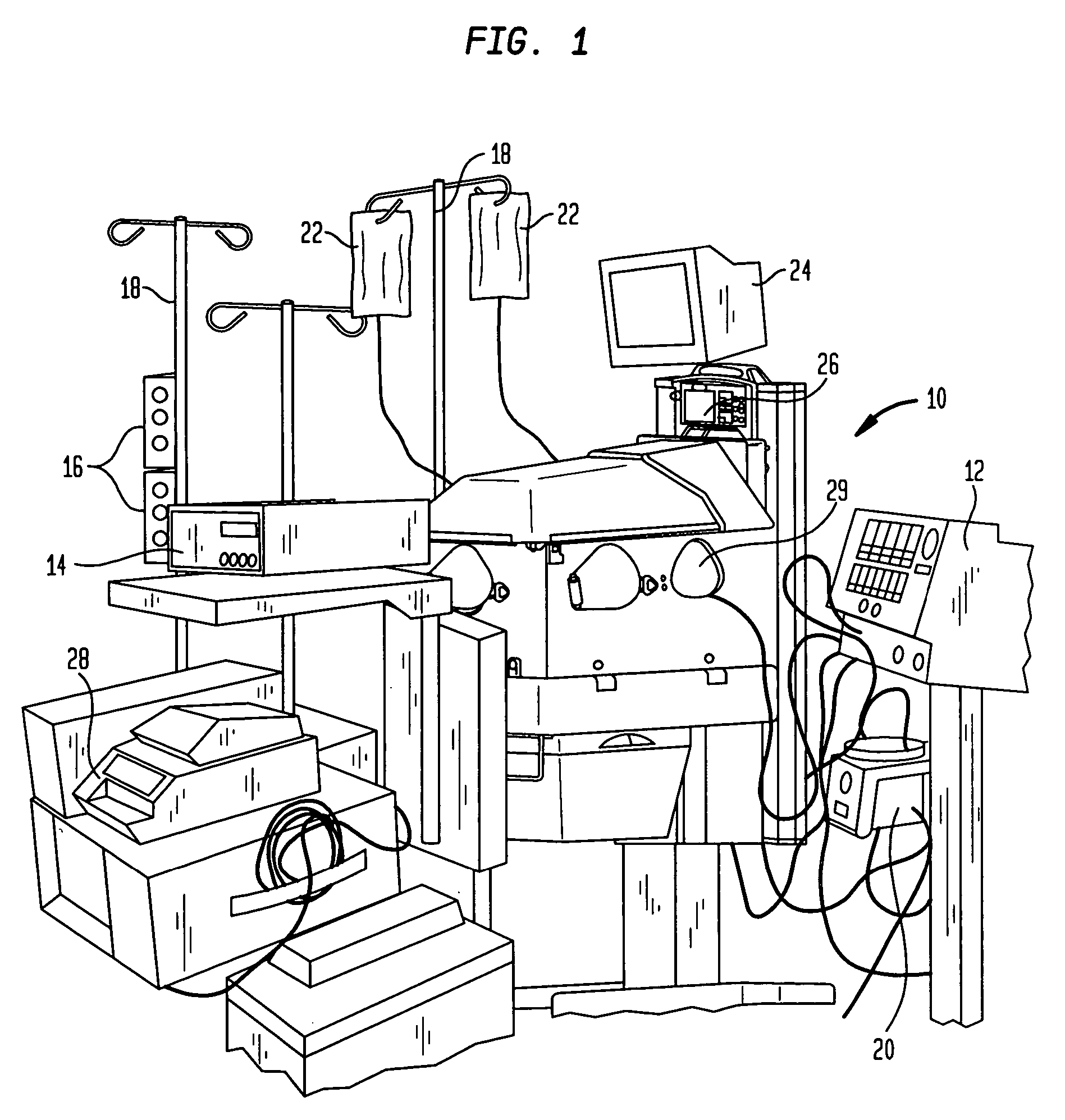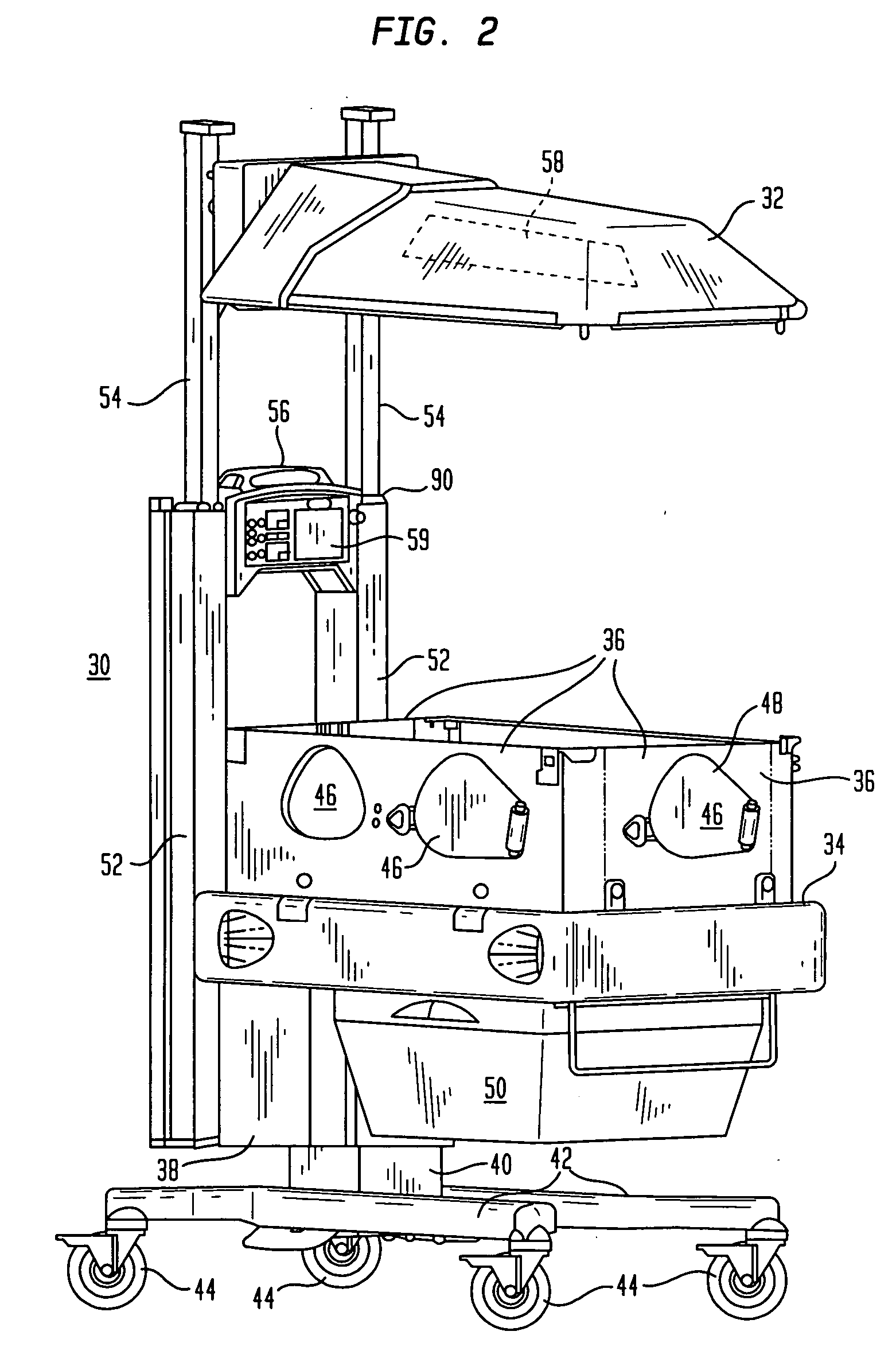Patient carestation
a technology for patients and caregivers, applied in the field of patient carestations, can solve the problems of difficult caregivers, difficult working conditions, and difficult environment surrounding, and achieve the effects of reducing the normal clutter of the nursery, ensuring the wellbeing of the infant, and facilitating observation
- Summary
- Abstract
- Description
- Claims
- Application Information
AI Technical Summary
Benefits of technology
Problems solved by technology
Method used
Image
Examples
Embodiment Construction
[0034] Referring now to FIG. 1 there is shown a perspective view of a typical hospital nursery having an infant care apparatus 10 situated therein. As can be seen, the infant care apparatus 10 is normally surrounded by a number of individual monitors that sense various parameters relating to the environment surrounding or affecting the infant by the infant care apparatus 10 as well as other peripheral devices and apparatus that may also be carrying out certain functions on the infant, including an infant ventilator 12. In addition there are a number of sensors and monitors that are continually sensing the physiological conditions of the infant.
[0035] For example, as to physiological conditions of the infant, there may be an oximeter 14 that is sensing the oxygenated blood concentration of the infant. Also as can be seen, there can normally be one or more syringe pumps 16 that deliver a bolus of a medication to the infant and which can be mounted to an IV pole 18. Other equipment in...
PUM
 Login to View More
Login to View More Abstract
Description
Claims
Application Information
 Login to View More
Login to View More - R&D
- Intellectual Property
- Life Sciences
- Materials
- Tech Scout
- Unparalleled Data Quality
- Higher Quality Content
- 60% Fewer Hallucinations
Browse by: Latest US Patents, China's latest patents, Technical Efficacy Thesaurus, Application Domain, Technology Topic, Popular Technical Reports.
© 2025 PatSnap. All rights reserved.Legal|Privacy policy|Modern Slavery Act Transparency Statement|Sitemap|About US| Contact US: help@patsnap.com



